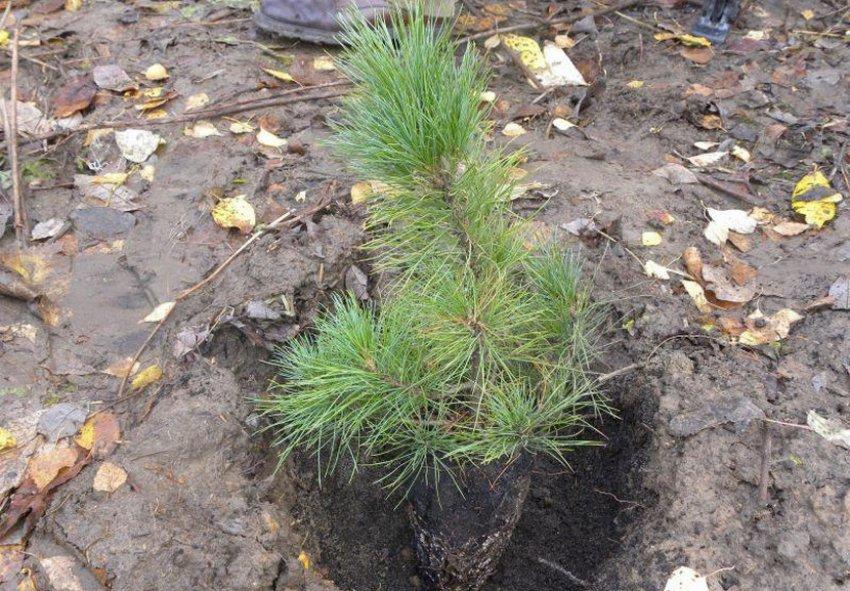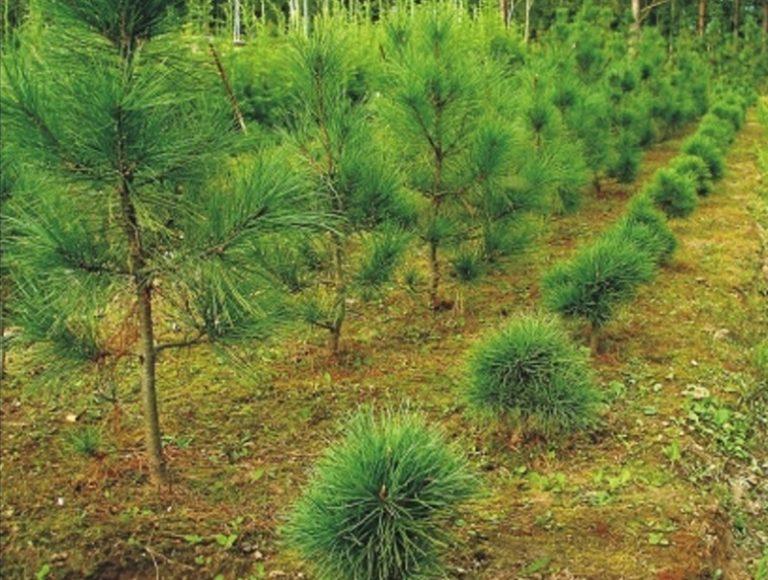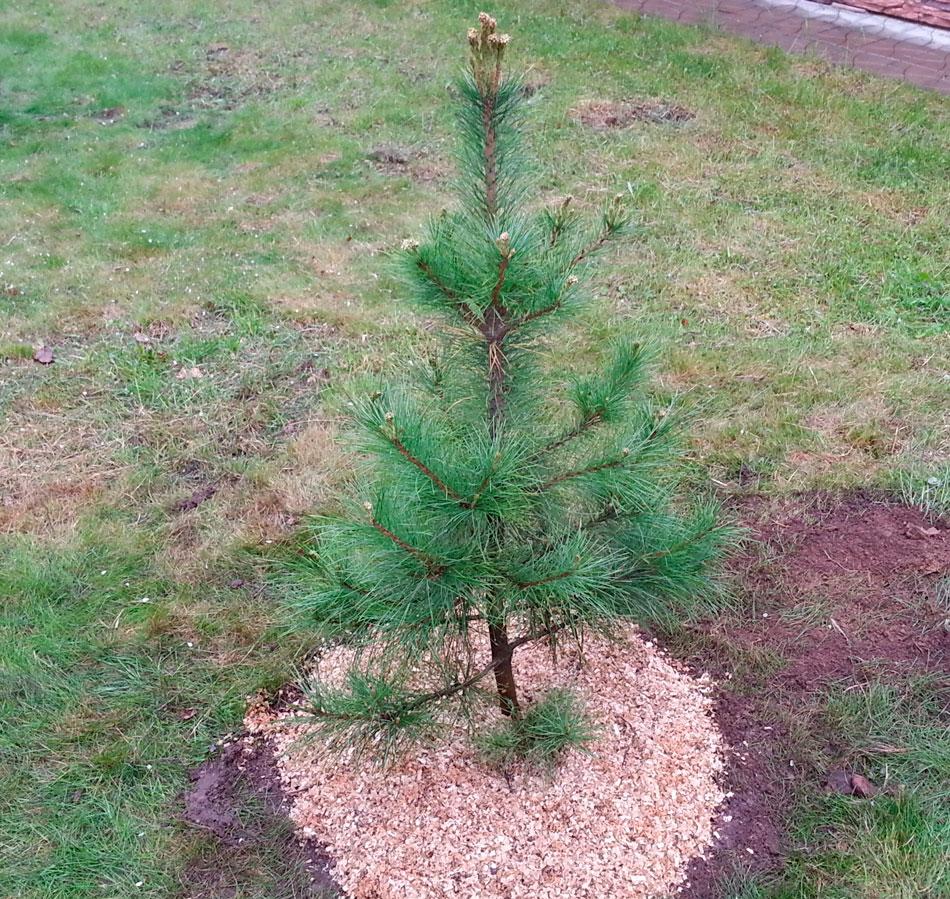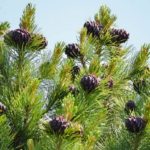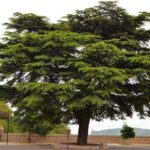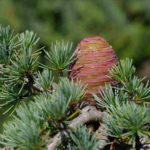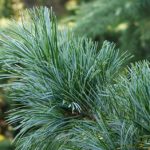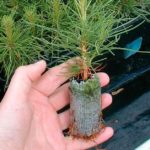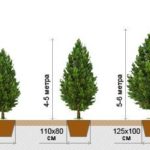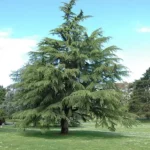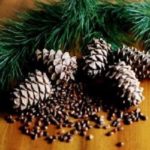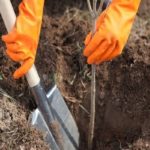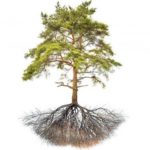Gardeners and landscape designers value cedar for its decorative properties and specific forest aroma. A beautiful plant is often grown from a seedling, since germination of seeds requires more time and special conditions. Seedlings in general do not require care, but for transplantation it is necessary to properly prepare the place. In gardening, there are several secrets on how to plant and replant a domestic cedar, as well as a wild tree from the forest.
When to do it
It is usually recommended to replant garden plants in the spring to make it easier for them to adapt. In autumn, it is important to choose a moment when severe frosts have not yet set in.The tree must have time to strengthen, then there is a chance that it will take root by spring.
Cedar is resistant to seasonal adaptation difficulties. Coniferous plants can be replanted at any time of the year.
Nurseries adhere to traditional rules and replant cedar in the spring. The most suitable period is from mid-March to June. If you need to transfer a seedling in the fall, you should be guided by the weather:
- first frost;
- lack of precipitation;
- moderately moist soil.
Transplant instructions
A common property of domestic and wild cedars is high frost resistance, demanding soil structure and moisture. A common disease of various types of cedar is chlorosis. Due to lack of light and low air humidity, the needles lose their green color.
In order for a young seedling or an adult tree to successfully take root, it is necessary to choose a suitable place for planting. The following areas are best suited:
- in partial shade, less often sunny;
- protected from the wind;
- with neutral, slightly acidic, loamy soil of loose consistency;
- with good drainage.
Cedar has a fragile trunk and can break from strong winds. The tree requires iron, so calcareous soil poor in this mineral is not suitable for it. The seedling will also need space for a branched root system. A tree trunk circle will require up to three meters in diameter.
When planting cedar, it is important to follow the rules of plant proximity. Coniferous trees are not planted next to currants and gooseberries.Fruit bushes become infected with cedar rust and cause resin cancer. Favorable neighbors - serviceberry, honeysuckle, raspberry. For the well-being of plants, it is also important to choose the right seedling and prepare the planting hole.
Selection of planting material
For transplanting from the forest, it is better to choose young cedars with a small crown, 5-6 years old. Their height is 1 meter and the trunk width is 2 centimeters. A suitable tree must be dug up carefully so as not to damage the roots. They are located close to the soil surface and exceed the crown in diameter. To calculate the safe distance for digging up a tree, use the formula: multiply the diameter of the trunk by 20.
When choosing a forest tree and a seedling from a nursery, you need to pay attention to the same characteristics:
| Characteristic | Description |
| Root system | Closed |
| Needles | Green |
| Branches | Elastic, without damage and dry bark, with growth buds at the ends |
The tree from the forest must be delivered together with a lump of earth. The seedling should be purchased in a container or its roots should be with soil and wrapped in burlap. A plant with exposed roots is difficult to transport to the site. Removing the earthen clod can damage the small shoots that provide nutrition. A seedling with damaged roots will die.
Soil preparation
When planting cedar, it is important to consider the location of groundwater. If the source is located close to the surface, it is necessary to pour an earthen rampart 1 meter thick and 3 meters in diameter onto the selected location. The planting hole must be prepared in the center of the embankment.
The procedure for preparing a site for planting cedar:
- the size of the hole is determined by the size of the earthen clod or container: the depth is 10 centimeters greater, and the width is 20 centimeters;
- drainage is poured onto the bottom of the hole - expanded clay, crushed stone;
- For fertilizer, mix equal amounts of sand, peat and humus. Ash and pine needles are added to the nutrient mixture and laid on top of the drainage layer in the planting hole.
For spring planting, the hole can be prepared in the fall. Over the winter, its walls will become looser, and frost will act as a natural disinfectant. In any season, the hole for the tree is prepared two weeks before planting or transplanting to a permanent location.
Planting process
The forest tree must be dug up so that an earthen ball forms on the roots. The plant is removed from natural soil at a temperature of -5 degrees and transferred to a new location. You can get cedar from the forest for free, you just have to ask permission to dig from the forestry department. But the disadvantage of this method of acquiring a coniferous tree is the high risk of damage to the roots and death of the plant.
Planting a purchased seedling:
- carefully remove from the container;
- install in the hole;
- fill with soil to the level of the root collar and compact;
- pour plenty of water - 5-10 liters.
When transplanting home cedar to another part of the site, before digging it is necessary to water the soil in the circle around the trunk so that the earth ball becomes denser. Pre-watering will also help free the nursery seedling from its container.
Care after transplant
The transplanted cedar is watered every two days. The tree needs feeding. After autumn replanting, it is better to use water-soluble fertilizers so that the roots are nourished along with watering. For cedar transplanted in spring, prepare mulch with mixed fertilizer.
The tree benefits from potassium, but excess nitrogen is dangerous. To accurately maintain the balance of substances, it is better to use a special mixture for coniferous plants.
Recommendations for beginners
Replanting a cedar is a simple task, but the result is not always pleasing to novice gardeners. The weather-resistant tree does not like sudden changes in location. The following tips will help you better adapt the seedling:
- position the tree according to the cardinal directions as it grew in the old place - the southern part of the trunk should face the south, the northern part should face the north. To do this, before digging, you need to navigate the site and the forest using a compass, and then put marks on the trunk;
- Secure the seedling installed in the hole to a peg so that the tree grows evenly. A lopsided cedar can no longer be straightened;
- Sawdust, leaves, peat, straw are suitable for mulch;
- Deep digging of the soil is not suitable for cedar with shallow roots. To saturate the earth with oxygen, it is enough to slightly loosen the surface of the tree trunk circle.
Cedar is planted at a distance of 5-6 meters from outbuildings and houses. A sign of an established seedling is dark green needles. Over the course of a year, trees grow 10-15 centimeters. Fruits will appear at the ends of the branches, which will become edible after two years. In the meantime, with proper care, cedar will fill the air with a pleasant woody-resin aroma.

